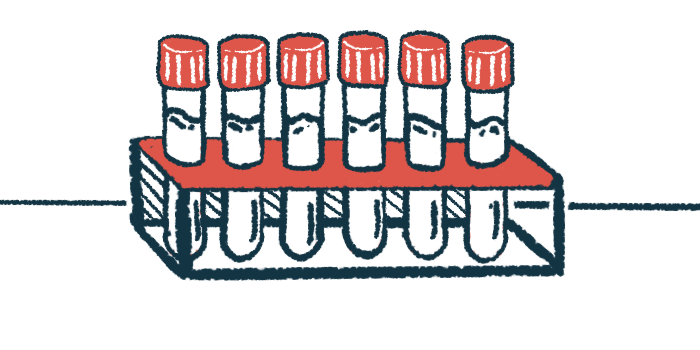Ferritin protein may be biomarker of AAV activity, kidney damage
Higher levels in blood linked to more severe damage in patients: Study

Elevated levels in the blood of ferritin, a protein that binds to iron and stores it for use by the body, are linked to more severe damage in people with active ANCA-associated vasculitis (AAV), and to a poorer outlook for the kidneys, according to a new study from China.
An analysis by researchers showed that a “high [blood ferritin] level was a risk factor for [end-stage renal (kidney) disease] and death,” the team wrote.
Importantly, patients with elevated ferritin and normal blood levels of C-reactive protein, or CRP — a marker of inflammation that’s typically elevated in active AAV — had the most severe disease.
That finding suggests ferritin may be a better biomarker of AAV activity than CRP, the researchers noted.
Their study, “Serum ferritin is a superior biomarker for evaluating disease activity and kidney injury compared with C-reactive protein in anti-neutrophil cytoplasmic antibody-associated vasculitis,” was published in the journal Clinical Rheumatology.
Investigating ferritin, C-reactive protein (CRP) levels in AAV
In most AAV cases, self-reactive antibodies prompt white blood cells called neutrophils to launch an inflammatory attack against the lining of small blood vessels. Over time, this leads to damage in the kidneys and other organs in the body, causing symptoms, often in the lungs, kidneys, nervous system, and skin.
Ferritin can extend the inflammatory response, for example, by helping neutrophils cast web-like structures that trap harmful substances at sites of inflammation. The iron-storage protein “is associated with the activity and [outlook] of various autoimmune diseases,” the researchers wrote. However, few studies have looked at its role in AAV.
To explore this, a team of researchers at Tianjin Medical University General Hospital retrospectively looked at the medical records of 399 people with AAV. The patients had been diagnosed at a median age of 64. All had their ferritin and CRP levels measured before receiving immunosuppressive treatment for AAV.
The results showed that nearly two-thirds (64.16%) had elevated ferritin and nearly three-quarters (72.43%) had elevated CRP. Slightly more than half (54.89%) had both their ferritin and CRP elevated. Also, 70 patients (17.54%) had high ferritin levels alone, and 37 (9.27% ) had high CRP levels alone.
The group with solely high CRP were the least affected by kidney involvement, with high levels of that protein associated with higher proportions of lung involvement, regardless of ferritin levels.
Based on those findings, “elevated CRP seems to be associated with lower kidney involvement and higher lung involvement,” the researchers wrote.
Conversely, patients with high ferritin had more severe disease, as assessed with the standard Birmingham Vasculitis Activity Score (BVAS), than those with normal ferritin, independently of CRP levels.
Study suggests ferritin may be better biomarker than CRP
Further analyses showed that patients with elevated ferritin but normal CRP had the most severe disease. This was reflected by highest BVAS and several signs of worse kidney disease, including the lowest initial estimated glomerular filtration rate (eGFR), the highest levels of protein in their urine, and the highest risk of progression to kidney failure.
Higher levels of ferritin in the blood had a weak but significant link to higher BVAS, indicating worse disease.
Ferritin, but not CRP, was found to be significantly associated with a higher risk of kidney failure and death. However, analyses adjusted for potential influencing factors did not identify ferritin as an independent risk factor of these outcomes.
Although both [blood ferritin] and CRP [C-reactive protein] are well-established indicators of inflammation, the correlation between [blood ferritin] and the severity of kidney injury is much better than that of CRP.
Tissue studies showed that patients with elevated ferritin had more damage in their kidneys, especially more glomeruli — the kidney’s filtering units — with a harmful structure called cellular crescents.
“Although both [blood ferritin] and CRP are well-established indicators of inflammation, the correlation between [blood ferritin] and the severity of kidney injury is much better than that of CRP,” the researchers wrote.
The findings suggest that ferritin may be a better biomarker of AAV.
“In active AAV, high [blood ferritin] is associated with severe injury and poor kidney prognosis, whereas CRP is not,” the team wrote. They noted, however, that the mechanisms by which ferritin may be linked to inflammation are yet to be understood.
“Future multicenter, prospective studies [following patients over time] with larger sample sizes and basic researches are necessary to further validate the clinical and [disease-causing] significance of [ferritin] and CRP in AAV,” the team concluded.








